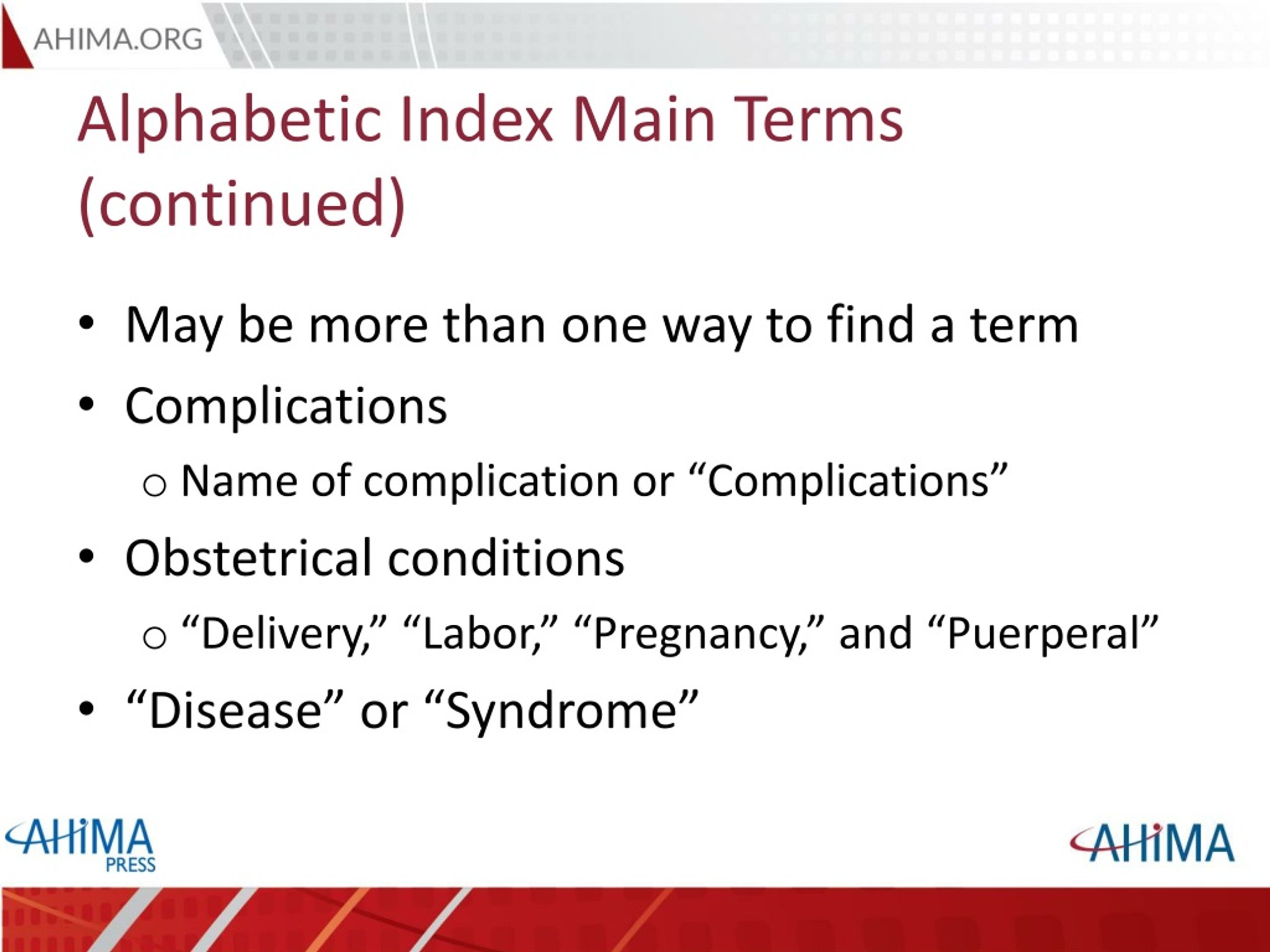
The conventions and instructions of the classification take precedence over guidelines.” These conventions are incorporated within the Alphabetic Index and Tabular List of the ICD-10-CM as instructional notes. Unfortunately, this is incongruent information, as according to the Official Coding Guidelines for ICD-10-CM, “ The conventions for the ICD-10-CM are the general rules for use of the classification independent of the guidelines.
Alphabetic index and tabular list code#
Interestingly, both the 2018 Official Coding Guidelines for ICD-10-CM and AHA Coding Clinic for ICD-10-CM, 4 th Quarter 2017 p 82 state: “If the patient is treated with both oral medications and insulin, only the code for long term (current) use of insulin should be assigned.” However, in the tabular listing, Z79.84 is considered an “Excludes 2” under Z79.4 and vice versa.

When assigning codes for diabetes, both the encoder and tabular prompts the coder to assign long term use of medications such as insulin (Z79.4), oral antidiabetic drugs (Z79.84) or oral hypoglycemic drugs (Z79.84). Under Section 1.B.17, it states that if the provider documents a borderline diagnosis at the time of discharge, it is to be coded as confirmed unless the classification provides a specific entry (e.g. Please note that this differs from the guidance given in the Official Coding Guidelines for ICD-10-CM for borderline diagnoses. The alphabetical index for these other terms is as follows:Īssuming that “uncontrolled” is basically the same as the terms above, it would result in an unnecessary query and potentially assigning the incorrect code.Īnother term often found in physician documentation is “borderline diabetes.” If the coder indexes this diagnosis, it guides the coder to assign R73.03. It is very important that the coders review the alphabetical index entries for all of these terms, as the index contains very specific direction to follow for final code assignment. Many physicians use other terms to define diabetes that is not within optimal control, such as “poorly controlled”, “inadequately controlled” or “out of control” to name a few. If a coder were to look up “Diabetes, uncontrolled” in the alphabetical index, it would appear in the index as follows: If the documentation is not specific to whether it is hyperglycemia or hypoglycemia, the coder is directed to query the physician for more specificity. This is also discussed in AHA Coding Clinic for ICD-10-CM and PCS, 1 st Quarter 2017 p 42. Now, when a coder sees documentation of “uncontrolled” diabetes, the alphabetical index directs the coder to further define the manifestation as either hyperglycemia or hypoglycemia.

One of the notable changes was to the alphabetical index coders could no longer assume that documentation of “uncontrolled” was synonymous with hyperglycemia as it had in the past. Within the last few years, there have been some changes with documentation and code assignment for various manifestations of diabetes mellitus. Diabetes Mellitus and the Alphabetical Index


 0 kommentar(er)
0 kommentar(er)
